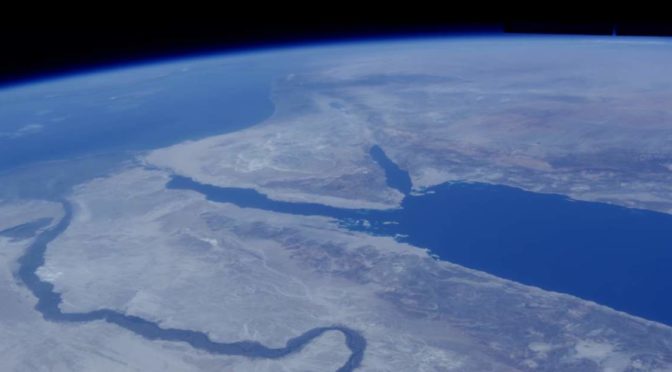On his most recent trip to the International Space Station (Expedition 48), recently-retired NASA astronaut Jeff Williams has recorded a great HD video of Earth (titled Jeff’s Earth) using an Ultra High Definition video camera.
Here in the video titled “Jeff’s Earth” below, he shares some of those images and talks about the beauty of the planet, the variety of things to see, and the value of sharing that perspective with everyone who can’t go to orbit in person.
The International Space Station (ISS) maintains an orbit with an altitude of between 330 and 435 kilometers (205 and 270 mi).
“The first time you see Planet Earth from space, it’s stunning; when you’ve spent 534 days in space – more than any other American – it still is!”
Jeff Williams
Jeff’s Earth
The transcription of the video:
“I don’t remember exactly where we were, the first time I viewed the earth, but I remember getting out of our spacesuits in the mid-deck of the space shuttle, and then floating back up, and finally having a chance to actually get my full view out the window, to get close to the window to view the Earth.”
“What struck me was the overall beauty of the planet. Specifically the blues of the oceans and the whites of the cloud formations.”
“I put a high priority on photography and video. From orbit, you see things at a different scale, and I think you can grow your appreciation for what the Earth offers to support our livelihood, to support our civilization.”
“And, now we can see it on a global scale, and maybe grow our appreciation of those things that are unique to Earth.”
“To view the Earth from space, of course, especially from a photographer’s point of view, it’s a target-rich environment. The ocean currents, and the vastness of the oceans, and in particular in sun glint… The cloud formations and other weather patterns are never-ending varieties.”
“The different landforms show themselves in different ways. Forested areas are much different than plains. Agriculture stands out. You can see elements of the culture and history of the area just through the patterns of agriculture.”
“Sand dunes became my favorite things to take pictures of.”
“You also have the evidence of civilization and habitation on the Earth.”
“Every sunset, every sunrise are unique in their patterns of cloud formations.”
“When you’re back on the Earth, the memories diminish quickly, so capturing the memories is important to be able to bring back the experience to others. So we can appreciate those things that are unique to Earth.”

As of August 23, 2016, Jeff Williams holds the United States record for most cumulative days in space with a total of 534 days. World records are like that:
- Man: Gennady Padalka (Russia – born 21 June 1958 in Krasnodar, Russia), who has spent 879 days in space over 5 missions, became the man who spent the most time in space when he surpassed, on 28 June 2015, the record of Sergei Krikalev who spent 803 days, 9 hours and 39 minutes, or 2.2 years in space over the span of six spaceflights on Soyuz, the Space Shuttle, Mir, and the International Space Station. Currently, second is Yuri Malenchenko who spent 828 days in space on six spaceflights.
- Woman: Peggy Whitson (the United States of America, born February 9, 1960) has spent 665 days 22 hours 22 minutes in space over the span of three spaceflights to the International Space Station. The second is Sunita Williams who spent 321 days 17 hours 15 minutes in space.
Sources
- Jeffrey Williams (astronaut) on Wikipedia
- List of spaceflight records on W
ikipedia
- Space Shuttle Endeavour’s Touchdown Meets Columbia’s Salute [An amazing photo from the past] - February 29, 2024
- Moon Landings: All-Time List [1966-2024] - February 23, 2024
- From Orbit to Ordinary: 10 Earthly Applications of Space Technology - January 23, 2024


